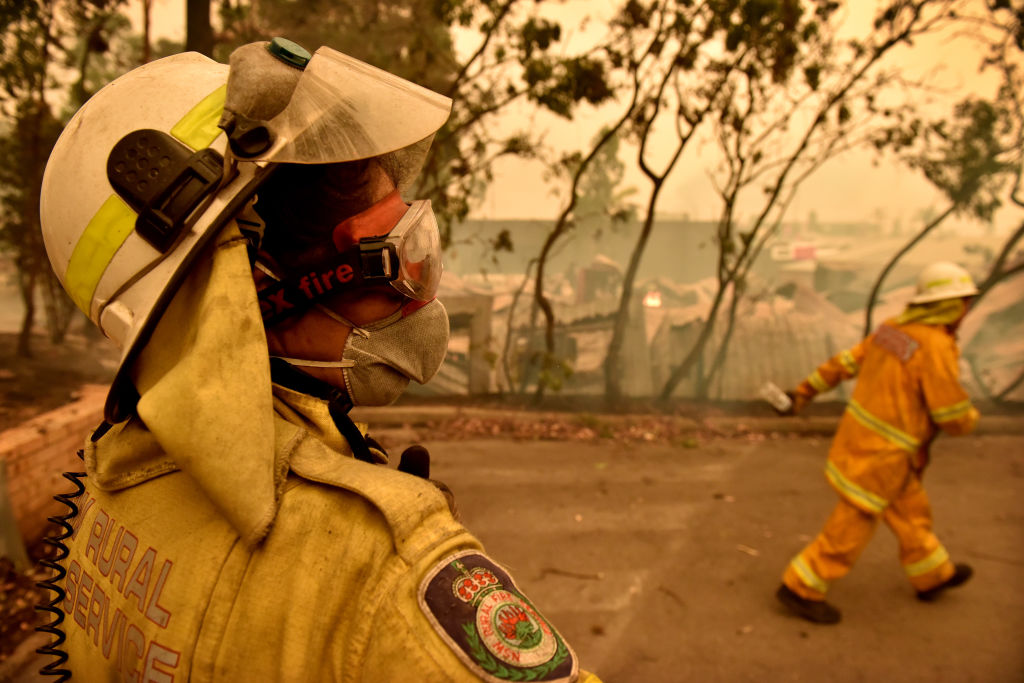
Scientists announced Wednesday that 2019 now ranks as the second hottest year globally. It comes in second to 2016 by less than 0.75°F (or about 0.04°C). Five of the warmest years in recorded history have occurred since 2015.
Global average temperatures in 2019 were 1.71°F (0.95°C) above the 20th century average, according to a new study by the National Oceanic and Atmospheric Administration (NOAA) and NASA. Several months throughout the year saw their highest global temperatures in recorded history, including June, when many European countries recorded record-breaking heat. The year was also the hottest on record for Alaska, where wildfires burned throughout the state over the summer.
Scientists also announced Monday that ocean temperatures are hotter than they’ve ever been. “We are heating the oceans today by the equivalent heat of five Hiroshima bombs every second, day and night, 365 days a year,” says John Abraham, professor of thermal sciences at the University of St. Thomas, who co-authored the study on oceanic temperature rise.
Oceanic temperature increase will lead to more severe and frequent natural disasters like hurricanes; will increase sea levels; and can permanently damage animal life, Abraham tells TIME.
A 2018 study by the Intergovernmental Panel on Climate Change, the United Nation’s climate body, previously warned that a global temperature rise of 1.5°C above preindustrial levels could have disastrous consequences.
“Temperatures will continue to increase and break records for decades to come—until global emissions reach net zero CO2,” says Piers Forster, professor of climate physics at the Priestley International Centre for Climate at the University of Leeds, in an emailed statement to TIME. “So we need to make sure our infrastructure and our food systems can live with this new normal.”
Alaska’s hottest year on record
Brian Brettschneider, post doctoral fellow at the International Arctic Research Center at the University of Alaska Fairbanks, says he wasn’t surprised 2019 was the state’s hottest year on record.
“We had a good idea that it was gonna happen based on where we were at through the month of November,” he tells TIME. “We knew that December in Alaska would have to be nearly historic cold for the entire month for it to not be the warmest year on record.”
While the global temperature overall increased, the arctic region experienced much higher temperatures than average. Over the summer, the state saw record-low levels of sea ice and more than 2.5 million acres of wildfire burned, diminishing air quality.
“Somebody’s gotta be the warmest bullseye,” says Brettschneider. “That was us this year. We just had a little bit of bad luck on top of the overall trend in warming.”
Alaska is warming more rapidly than most of the rest of the world, according to Deke Arndt, climate monitoring chief at the NOAA’s National Centers for Environmental Information
Little changes in temperatures can make a big difference in the day-to-day lives of Alaskans, Brettschneider adds. People who are not in major urban centers depend on a stable climate for food and transportation, he says. Warmer years can force people to change the way that they live, and some have had to move, he says. Some communities experienced water shortages. Low sea ice levels also impacted people on the west coast of Alaska who depend on seasonal ice to catch food and maintain cultural traditions. Some died falling through thin ice that did not used to be thin.
Thawing permafrost presents another problem, Ardnt says.
“When you’ve built buildings and pipelines and roads and road beds on the assumption that the frozen soil will never unfreeze, and then it starts thawing, there’s significant infrastructure problems,” he tells TIME.
Thawing permafrost could also expose coastal terrain to erosion, Ardnt says. “There are cases where villages have needed to be transplanted and moved inland,” he says. “Those are just a couple of the impacts.”
‘Global warming is really ocean warming’
Over 90% of global warming heat goes into the ocean, says Abraham, who co-authored a study by the American Association for the Advancement of Science on oceanic warming.
The study found that the ocean temperature in 2019 was the hottest on record. The study by NASA and NOAA came to the same conclusion in their analysis.
“Global warming is really ocean warming,” Abraham says. “Ocean warming is the clearest evidence we have of climate change.”
Though the increase in global temperature has trended upward, the annual average temperature can vary from year to year depending on weather patterns such as El Niño or La Niña.
Oceans instead provide clearer data, Abraham says, that global warming is indisputable. Oceanic temperature rise has increased each year since 2017 and has steadily been rising since the mid 1990s, according to the study, jeopardizing sea level rise and biodiversity. Warmer oceans can also cause more extreme weather events.
“There are solutions, and that’s the reason I can be optimistic sometimes,” Abraham adds. Today’s technology, for example, can help consumers use energy more wisely. Wind and solar energy has also become more affordable he says, which allows the sectors to compete with fossil fuel energy production.
“Solutions are in our grasp,” Abraham says.
Correction, Jan. 16
The original version of this story misstated the status of the oceanic temperature over time. The temperature has fluctuated since the 1990s, it has not increased every year since then. It has increased every year since 2017.
More Must-Reads From TIME
- The 100 Most Influential People of 2024
- Coco Gauff Is Playing for Herself Now
- Scenes From Pro-Palestinian Encampments Across U.S. Universities
- 6 Compliments That Land Every Time
- If You're Dating Right Now , You're Brave: Column
- The AI That Could Heal a Divided Internet
- Fallout Is a Brilliant Model for the Future of Video Game Adaptations
- Want Weekly Recs on What to Watch, Read, and More? Sign Up for Worth Your Time
Write to Jasmine Aguilera at jasmine.aguilera@time.com